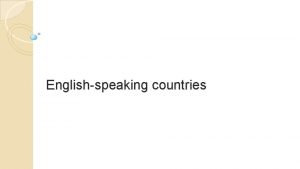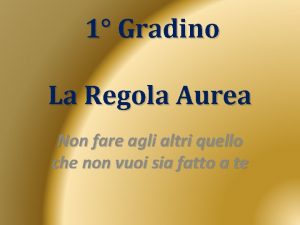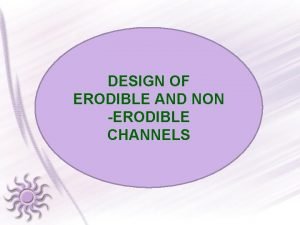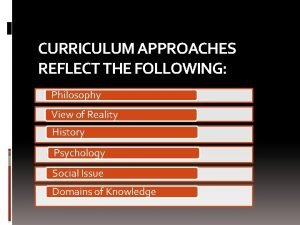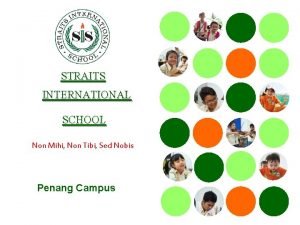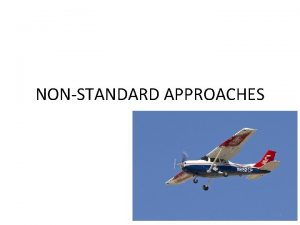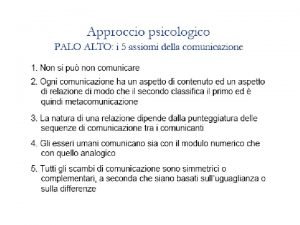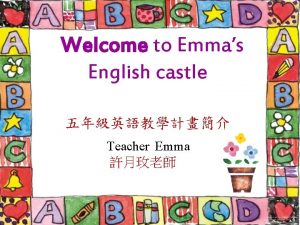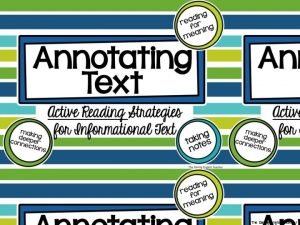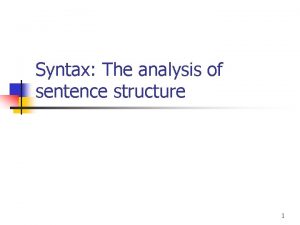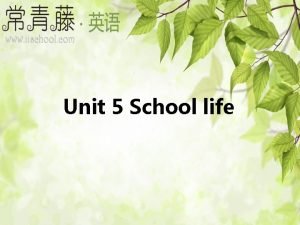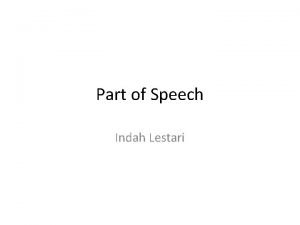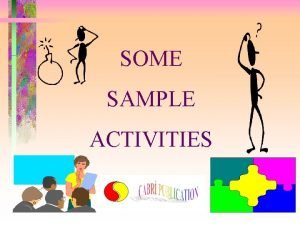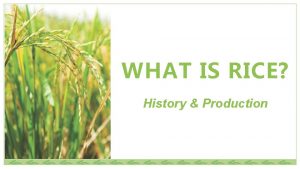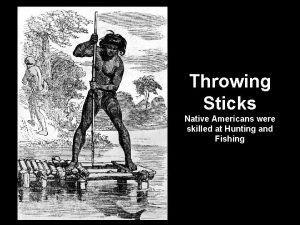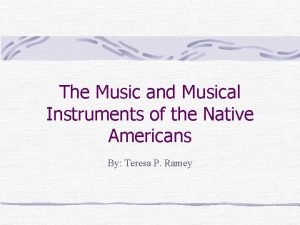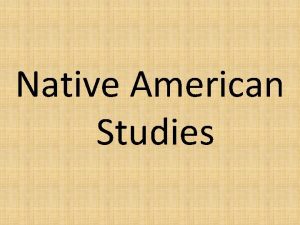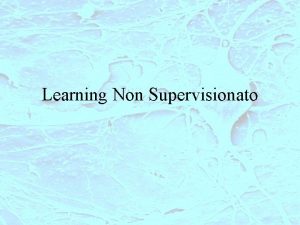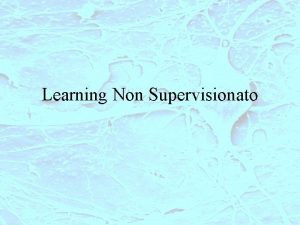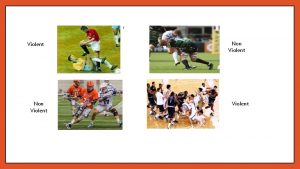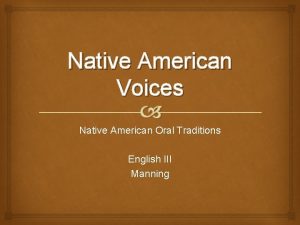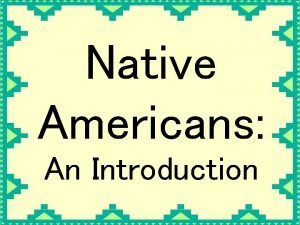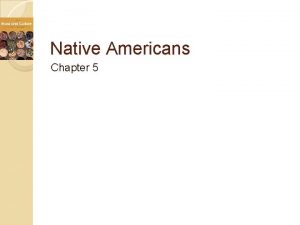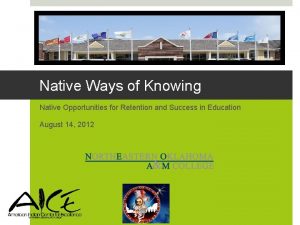NATIVE ENGLISH TEACHER OR NON NATIVE ENGLISH TEACHER










































- Slides: 42

NATIVE ENGLISH TEACHER OR NON- NATIVE ENGLISH TEACHER? This is my question. Halina Ostankowicz- Bazan 8/2/2017

In the fields of business, academics, science, computing, education, transportation, politics and entertainment, English is already established as the de facto lingua franca. The UN, currently uses five official languages: English, French, Spanish, Russian and Chinese, and an estimated 85% of international organizations have English as at least one of their official languages (French comes next with less than 50%). About one third of international organizations (including OPEC, EFTA and ASEAN) use English only, and this figure rises to almost 90% among Asian international organizations. English is crucially important for developing international markets, especially in the areas of tourism and advertising, and mastery of English also provides access to scientific, technological and academic resources which would otherwise be denied developing countries. IS ENGLISH A GLOBAL LANGUAGE?

Global English


WORLD MAP OF COUNTRIES BY ENGLISH BEING THEIR OFFICIAL LANGUAGE

The percentage of native English speakers living in "inner circle" English-speaking countries. Native speakers are now substantially outnumbered worldwide by secondlanguage speakers of English Ø United States (64. 3%) Ø United Kingdom (16. 7%) Ø Canada (5. 3%) Ø Australia (4. 7%) Ø South Africa (1. 3%) Ø Republic of Ireland (1. 1%) Ø New Zealand (1%) Other (5. 6%)

English-speaking world Ø English is the third largest language by number of native speakers, after Mandarin and Spanish. Ø David Crystal calculates that non-native speakers as of 2003 outnumbered native speakers by a ratio of 3 to 1. Ø When combining native and non-native speakers, English is the second most widely spoken language worldwide. Ø Besides the major varieties of English, such as American English, British English, Indian English, Canadian English, Australian English, Irish English, New Zealand English and their sub-varieties, countries such as South Africa, the Philippines, Jamaica and Nigeria also have millions of native speakers of dialect continua ranging from English-based creole languages to Standard English.

If I were in charge of a language-teaching institution, I would want to know four things about applicants: are they fluent? are they intelligible? do they know how to analyze language? are they good teachers? I would not be interested in where they were born, what their first language was, or whether they had a … ― DAVID CRYSTAL

“A native speaker (NS) of a language is a person who has acquired the language a their first language in childhood. Native speakers are considered to know this language intuitively, and to use it accurately, fluently and appropriately. ” (Scott Thornbury, An A-Z of ELT) WHO IS A NATIVE SPEAKER?

“born in an English speaking country” and “grew up speaking English at home” DAN BAINES

NNEST (/ɛnˈnɛst/ en-NEST) or non-native English-speaking teachers is an acronym that refers to the growing body of English language teachers who speak English as a foreign or second language. The term was coined to highlight the dichotomy between native English-speaking teachers (NEST) and non-native English-speaking teachers (NNEST). Issues related to NNESTs attract the attention of language teachers, language specialists, teacher educators, and graduate students from all over the world. TESOL[1] (Teachers of English to the Speakers of Other Languages) organization has a NNEST Interest Section. [2] Two local TESOL affiliates in North America, WATESOL (Washington Area TESOL) and CATESOL (California TESOL) have NNEST entities. NNEST - Wikipedia https: //en. wikipedia. org/wiki/NNEST non-native speaker noun [ C ] /ˌnɒn. neɪ. tɪv ˈspiː. kər/ /ˌnɑːn. neɪ. t ɪv ˈspiː. kɚ/ someone who has learned a particular language as a child or adult rather than as a baby :

WHO IS NON - NATIVE ENGLISH TEACHER Erzsebet Bekes & Marcela Carrasco re-examine the NEST vs NNEST debate and argue that a change in perception is long overdue. With English becoming a global / international language, NNESTs are gaining a competitive advantage: they are bilingual and bicultural (often multilingual and multicultural) as well as lifelong learners of an additional language. July 2017

Nowadays, the definitions of native speaker vs. non-native speaker are outdated. Many people today are bilingual- speak two languages or more proficiently. Non-native speakers have learned English in a classroom, and so are more equipped to teach it to others. NATIVE SPEAKERS IN ESLNOWADAYS

NATIVE SPEAKERS IN ESLBEFORE Ø Up until the 1990’s, it was believed that the objective of L 2 learners was to achieve the level of a native English speaker. Ø Native speakers were considered to be better ESL teachers, regardless of proficiency or experience. Ø Any difference from speaking as a native speaker was considered a failure.

Native and Non-Native Teachers in English Language Classrooms: Professional Challenges and Teacher Education 8 May 2017 Ø The controversial issue of (non)nativeness still remains unresolved. Ø In today's world, being a NS or NNS should not really matter but rather teachers' professional competences. Ø This publication thus provides a forum of reflection and discussion for all L 2 educators who need to be aware of how much they might offer to their future students. Juan de Dios Martinez Agudo Walter de Gruyter Gmb. H & Co KG, May 8, 2017

THE ‘NATIVE FACTOR’ – THE HAVES AND THE HAVE-NOTS …AND WHY WE STILL NEED TO TALK ABOUT THIS IN 2016 Silvana Richardson, Bell Students showed a positive attitude towards NNESTs The majority would rather learn from local NNS English teachers instead of NS teachers. They liked studying with NNSTs. Most did not encounter problems with NNSTs because of their ‘nonnativeness’. NNSTs taught as effectively as NTS. Cheung’s findings

Using Kachru’s Circle Theory Studies suggest that there were (in 2001) an estimated Ø 375 million users of English in Inner-Circle societies, Ø 375 million in Outer-Circle (ESL) societies, and Ø 750 -1, 000 million in the Expanding (EFL) Circle (Mc. Arthur, 2001) Ø The vast majority of teachers of English as a second and foreign language in the world today are ‘non-native’ teachers working in a wide range of settings in Outer-Circle and Expanding-Circle societies. (p. 261, Bolton, 2006). Non-native English speaking teachers = NNESTs

BENKE AND MEDGYES’ FINDINGS Ø ‘Both NS and NNS teachers play an important role; neither group should be dispensed with. ’ Ø The overwhelming majority of the participants felt that it was important that teachers should be able to translate (84. 4%) Ø Ideally both NS and NNS teachers should teach them (82%) The least popular statement was ‘I wish I had only NNS teachers’ (5. 9%)

“ Mahboob and Golden’s findings Ø “Nativeness” was the single most frequent criterion mentioned in the advertisements (79%) Ø 49% of the advertisements listed specific countries from which the applicants must come Ø 95% the US Ø 89% the UK Ø 84% Canada Ø 66% Australia Ø 55% New Zealand Ø 37% Ireland Ø 24% South Africa ” 2 advertisements specified race: “white” or “Caucasian” native speakers

IMPACT OF ‘NATIVE SPEAKER WANTED’ ADS ‘Teaching job announcements that indicate a preference or requirement for a "native" speaker of English trivialize the professional development teachers have received and teaching experience they have already acquired. Such announcements are also discriminatory […] [and] ultimately harm all teachers (native or not) by devaluing teacher education, professionalism, and experience. ’ CATESOLs position paper opposing discrimination against Non-Native English Speaking Teachers (NNESTs) and teachers with "non-standard" varieties of English (2013)

MAHBOOB AND GOLDEN’S FINDINGS Ø “Nativeness” was the single most frequent criterion mentioned in the advertisements (79%) Ø 49% of the advertisements listed specific countries from which the applicants must come Australia Canada Ireland New Zealand South Africa UK US

Students generally value professional and personal qualities over ‘nativeness’ Ø Both ‘NESTs’ and ‘NNESTs’ are perceived to be competent teachers, each with unique strengths Ø Ø Preference is inconclusive Some studies indicate a preference for both Others show a preference for NNESTs Others report a preference for NESTs STUDENT PERCEPTION STUDIES IN SUMMARY ‘Students are not necessarily as impressed by native speaker teachers as one might suppose. ’ Cook (2005)

The groups who found native speakerism the least justifiable are the people in jobs that typically require a greater amount of experience. What is interesting in the case of academic management is that these are often the people responsible for the hiring of teachers as the further discrimination of NNESTs. What is striking is that 73% of exteachers felt that these hiring practices were unjustified. October 19, 2016 DAN BAINES

What do you think about the statements? ‘‘Native speakers are the best teachers of their own language. ” ‘‘Asian schools are providing their customers with what they want: native English speakers. ” ‘‘I wouldn’t have my child learn English from a non-native speaker. ” ‘‘Parents do care about the white face, even to the point of preferring a white non-native speaker to an Asian native speaker. ”

HOPES FOR THE FUTURE Ø Having even opportunities for NESTs and non-NESTs Ø Letting all teachers to be judged as individuals rather than as representatives of potentially prejudicial categories. Teachers who are to produce bilinguals should themselves be bilingual, i. e. , be reasonably fluent speakers of both the target language and the language of their pupils. Butzkamm, W and Caldwell, J. 2009.

How to Be a GREAT ESL Teacher, No Matter What Your Background Is The skills and qualities that make an effective language teacher are the most significant. Why do we need to talk about native speakerism? - BBELT 2017 plenary part 1 https: //youtu. be/GFRIna 9 y. Fx 8

https: //youtu. be/gzu 8 dc. Dk 84 g

Marek Kiczkowiak, Ph. D student at the University of York, UK In the case of native speakerism, what maintains it in power as an ideology are various discourses in ELT and SLA which through knowledge and social practice make it appear justifiable. While it is impossible to review all of them here, this article will focus on four: 1. the ‘native’ and ‘non-native speaker’ dichotomy; 2. the ‘native speaker’ fallacy (Phillipson, 1992), or the view that a ‘native speaker’ is a priori better suited for teaching English than a ‘non-native speaker’; 3. the comparative fallacy (Moussu & Llurda, 2008), or the view that ‘native’ and ‘non-native speaker’ teachers are characterized by a set of fixed strengths and weaknesses; 4. ELT recruitment policies. The analysis of these discourses will be followed by a proposal to debate and discuss them with students in class in order to raise their awareness of native speakerism in ELT.




https: //halinaostankowicz. blogspot. com/



What Advantages Non-native Speakers Have Over Native Speakers? ? ? Ø They Understand Students Better Ø They Understand the Differences between English and L 1 Ø They Understand the Students’ Cultural Background Ø Only if the teacher and students have the same cultural background. Ø The non-native speaker might understand which aspects of the students’ culture may not be compatible with English-speaking cultures, things like, for example, greetings and customs.

What can non-native English-speaking teachers (NNESTs) do better? What can native English-speaking teacher (NESTs) do better? Could you please answer the questions?

References Aboshiha, P. (2015). Rachel’s story: Development of a “native speaker” English language teacher. In A. Swan, P. Aboshiha, & A. Holliday (Eds. ), (En)Countering nativespeakerism (pp. 43– 58). New York, NY: Palgrave Macmillan. Retrieved from http: //link. springer. com/ Ali, S. (2009). Teaching English as an International Language (EIL) in the Gulf Corporation Council (GCC) Countries: The brown man’s burden. In F. Sharifian (Ed. ), English as an international language: Perspectives and pedagogical issues (pp. 34– 57). Bristol: Multilingual Matters. Amin, N. (1997). Race and the identity of the nonnative ESL teacher. TESOL Quarterly, 31, 580– 583. doi: 10. 2307/3587841 Amundrud, T. (2007). Talking about the roles of non-Japanese teachers of English. In JALT 2007 Conference Proceedings (pp. 90– 102). Tokyo: JALT. Retrieved from https: //www. academia. edu/204086/ Talking_about_the_roles_of_non-Japanese_teachers_of_ English Árva, V. , & Medgyes, P. (2000). Native and non-native teachers in the classroom. System, 28, 355– 372. doi: 10. 1016/ S 0346 -251 X(00)00017 -8 Ashcroft, B. , Griffiths, G. , & Tiffin, H. (2003). The empire writes back: Theory and practice in post-colonial literatures. New York, NY: Routledge.

Clandinin, J. D. , & Connelly, M. F. (2000). Narrative inquiry: Experience and story in qualitative research. San Francisco, CA: Jossey-Bass. Cook, V. (2001). Second language learning and language teaching (3 rd ed. ). London: Arnold. Creswell, J. W. (2013). Educational research: Planning, conducting, and evaluating quantitative and qualitative research (4 th ed. ). Boston, MA: Pearson. Davies, A. (2003). The native speaker: Myth and reality (2 nd ed. ). Clevedon: Multilingual Matters. Davies, A. (2012). Native speaker. In The encyclopedia of applied linguistics. Blackwell Publishing. Retrieved from http: //onlinelibrary. wiley. com/ doi/10. 1002/9781405198431. wbeal 0855/abstract Davies, A. (2013). native speakers and native users: Loss and gain. Cambridge: Cambridge University Press. http: //dx. doi. org/10. 1017/CBO 9781139022316 Doan, N. (2014). Employing expatriate NNS teachers of English in Vietnam: Views from the public. NNEST Newsletter, 16(1). Retrieved from http: //newsmanager. commpartners. com/tesolnnest/issues/2014 -03 -11/3. html

Houghton, S. , & Rivers, D. J. (2013 a). Introduction: Redefining native-speakerism. In S. Houghton & D. J. Rivers (Eds. ), Native-speakerism in Japan. Intergroup dynamics in foreign language education (pp. 1– 16). Bristol: Multilingual Matters. Houghton, S. , & Rivers, D. J. (2013 b). Native-speakerism in Japan: Intergroup dynamics in foreign language education. Bristol: Multilingual Matters. Inbar-Lourie, O. (2005). Mind the gap: Self and perceived native speaker identities of EFL teachers. In L. van Lier (Ed. ), Non-native language teachers (pp. 265– 281). New York, NY: Springer US. Retrieved from http: //link. springer. com/ chapter/10. 1007/0 -387 -245650_14 http: //dx. doi. org/10. 1007/b 106233 Javid, C. Z. (2016). Teaching effectiveness of native and nonnative EFL teachers as perceived by preparatory year students in Saudi context. Language in India, 16, 98– 122. https: //teflequityadvocates. com/2014/07/18/tefl-equity-advocates-on-british-council-blog/ Native-speakerism and the complexity of personal experience: A duoethnographic study by Robert J. Lowe and Marek Kiczkowiak https: //www. researchgate. net/publication/304170749_ Discrimination_and_discriminatory_practices_against_NNESTs

Reves, T. , & Medgyes, P. (1994). The non-native English speaking EFL/ESL teacher’s selfimage: An international survey. System, 22, 353– 367. doi: 10. 1016/0346 -251 X(94)90021 -3 Rivers, D. J. (2013). Institutionalized native-speakerism: Voices of dissent and acts of resistance. In S. Houghton & D. J. Rivers (Eds. ), Native-speakerism in Japan. Intergroup dynamics in foreign language education (pp. 75– 91). Bristol: Multilingual Matters. Romney, M. (2010). The color of English. In A. Mahboob (Ed. ), The NNEST lens: Non native English speakers in TESOL (pp. 18– 34). Newcastle upon Tyne: Cambridge Scholars. Ruecker, T. , & Ives, L. (2015). White native English speakers needed: The rhetorical construction of privilege in online teacher recruitment spaces. TESOL Quarterly, 49, 733– 756. doi: 10. 1002/tesq. 195 https: //teflequityadvocates. com/the-blog/

Selvi, A. F. (2010). All teachers are equal, but some teachers are more equal than others: Trend analysis of job advertisements in English language teaching. WATESOL NNEST Caucus Annual Review, 1, 155– 181. Selvi, A. F. (2014). Myths and misconceptions about nonnative English speakers in the TESOL (NNEST) movement. TESOL Journal, 5, 573– 611. http: //dx. doi. org/10. 1002/tesj. 158 TESOL (2006). Position statement against discrimination of nonnative speakers of English in the field of TESOL. <http: //www. tesol. org>. Thomas, J. (1999). Voices from the Periphery: Non-native teachers and issues of credibility. In Braine (ed. ), 5– 14. Tsui, A. B. (2003). Understanding expertise in teaching. Cambridge: Cambridge University Press. Valdes, G. (1998). The construct of near-native speaker in a foreign language profession: Perspectives on ideologies about language. ADFL Bulletin 29. 3, 4– 8. https: //teflequityadvocates. com/

THANK YOU FOR WATCHING Halina Ostankowicz- Bazan 8/2/2017
 Se yon bel pale kristal chant d'esperance
Se yon bel pale kristal chant d'esperance English native countries
English native countries Erf teacher 3
Erf teacher 3 Good evening teacher
Good evening teacher Non nobis, domine, sed nomini tuo da gloriam
Non nobis, domine, sed nomini tuo da gloriam Bene non escludibile e non rivale
Bene non escludibile e non rivale Barang eksklusif
Barang eksklusif Posse peccare
Posse peccare Mai fare agli altri ciò che non vorresti fosse fatto te
Mai fare agli altri ciò che non vorresti fosse fatto te Contoh pelarut protonik
Contoh pelarut protonik Chi non stima la vita non la merita
Chi non stima la vita non la merita Non nobis domine sed nomini tuo da gloriam
Non nobis domine sed nomini tuo da gloriam Parafrasi divina commedia inferno
Parafrasi divina commedia inferno Kennedy critical velocity formula
Kennedy critical velocity formula Non fidarti di chi non chiude gli occhi quando ti bacia
Non fidarti di chi non chiude gli occhi quando ti bacia Behavioral-rational approach to curriculum
Behavioral-rational approach to curriculum Non mihi
Non mihi Radar approaches
Radar approaches Non quia difficilia sunt non audemus
Non quia difficilia sunt non audemus Gli assiomi della comunicazione
Gli assiomi della comunicazione Lên non mới biết non cao lội sông mới biết
Lên non mới biết non cao lội sông mới biết Emma english teacher
Emma english teacher The daring teacher
The daring teacher What is syntax
What is syntax English for palestine grade 6
English for palestine grade 6 Who is your english teacher
Who is your english teacher I like english because
I like english because Television as a means of communication
Television as a means of communication (dita) is an amazing english teacher at school
(dita) is an amazing english teacher at school African american english teacher
African american english teacher Activity 1: name me
Activity 1: name me Banegas initial english language teacher education download
Banegas initial english language teacher education download Rice native to america
Rice native to america Hopi rabbit stick
Hopi rabbit stick Native american musical instruments
Native american musical instruments How long have native american been living in america
How long have native american been living in america Saul was a native of
Saul was a native of Usestate react
Usestate react Dynamic picker react native
Dynamic picker react native React native navigation header
React native navigation header Traversy media react native
Traversy media react native What is the meaning behind the pnp seal and badge
What is the meaning behind the pnp seal and badge Pure mobile web apps are written only in
Pure mobile web apps are written only in

